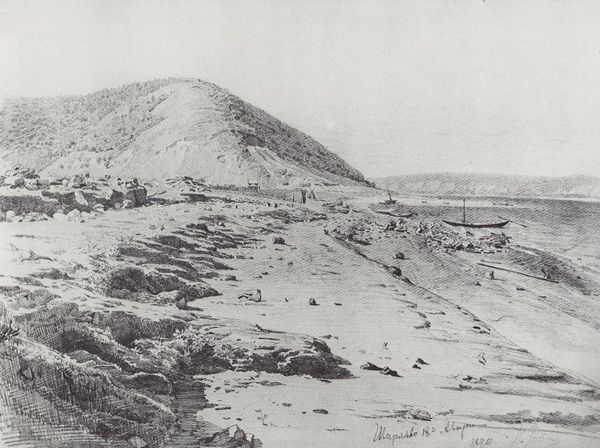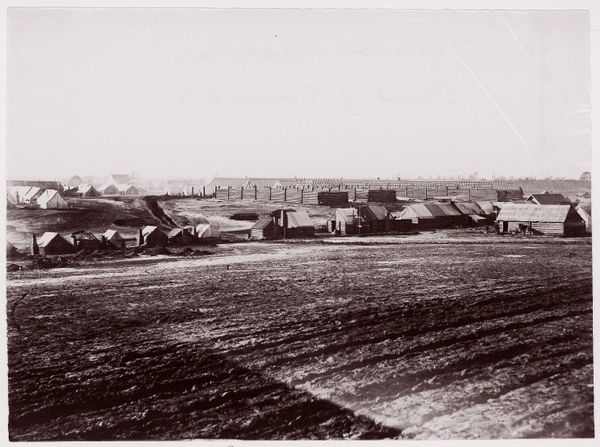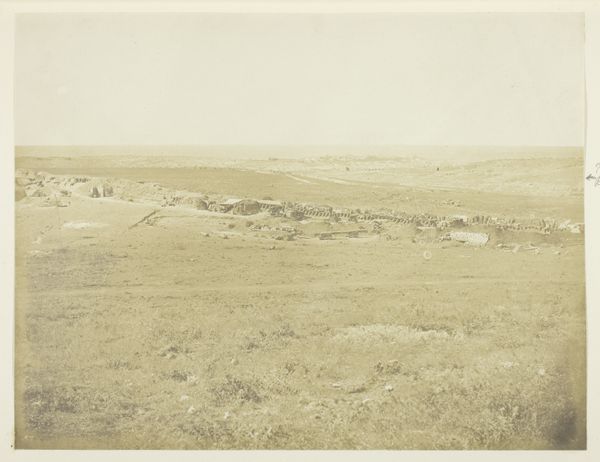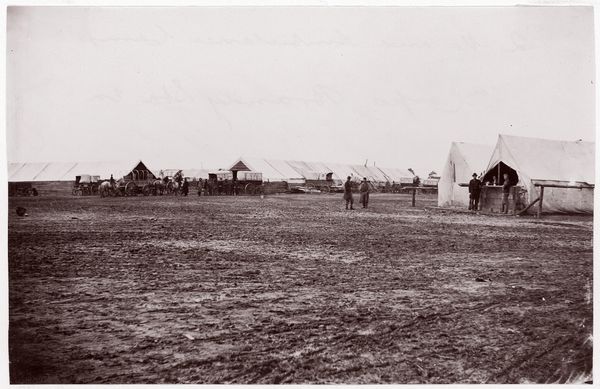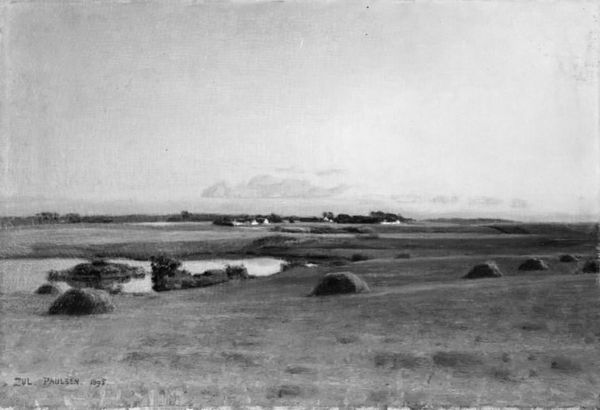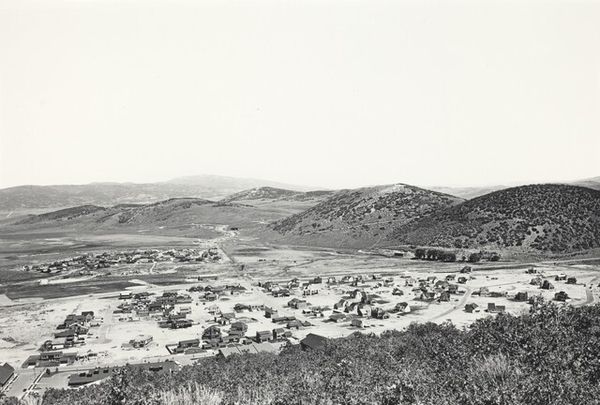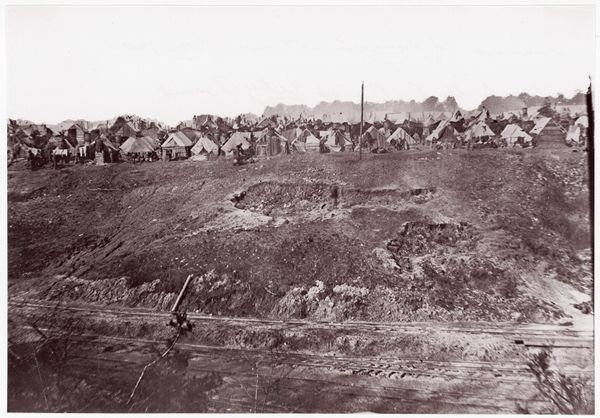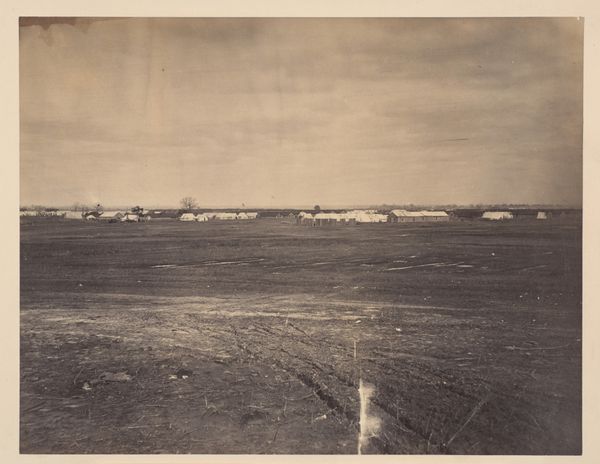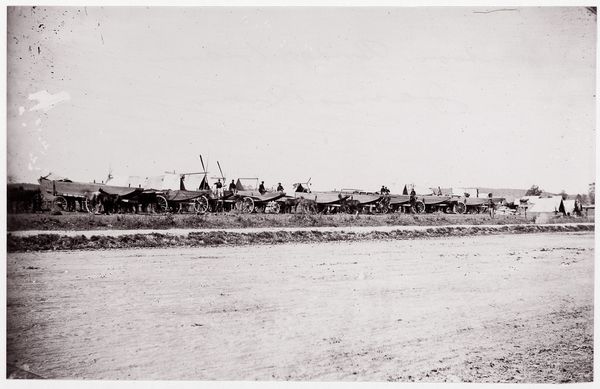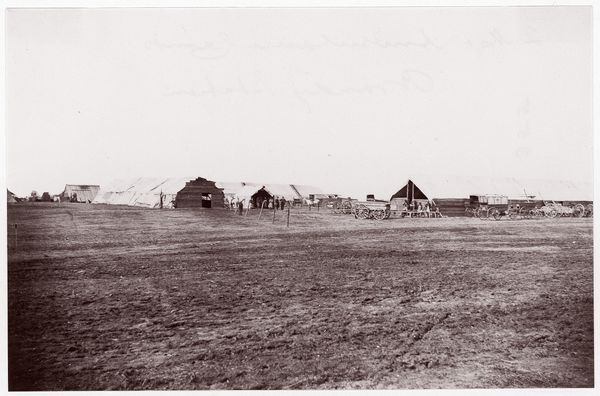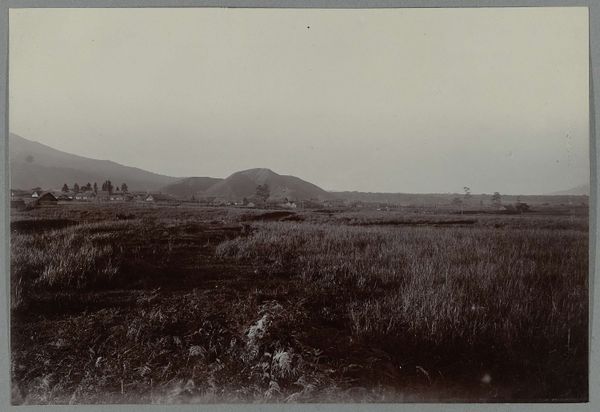
drawing, paper, ink, graphite
#
drawing
#
landscape
#
paper
#
ink
#
graphite
Copyright: Public domain
Editor: Take a look at this ink drawing on paper, titled "Fort Pierre and the Adjacent Prairie," created in 1839 by Karl Bodmer. It feels expansive and quiet, but also somewhat unsettling, perhaps because of the seemingly vast and empty plains. What catches your eye when you observe the visual structure of this piece? Curator: The spatial composition is rather remarkable. Observe how the artist positions us, the viewers, above the scene, looking down upon the fort and the indigenous encampment. This deliberate placement invites a particular kind of reading, doesn’t it? How does that perspective influence our understanding? Editor: I see what you mean. Being positioned above makes me feel detached, almost like an observer rather than an inhabitant of the scene. It definitely emphasizes the vastness of the land. Does the use of monochrome – the varying shades of grey from the ink – add to this feeling of detachment? Curator: Precisely. Consider the linearity of the ink work. Bodmer has meticulously rendered details. Notice the fort itself, its palisades and structures carefully delineated. Then look at the encampment, each teepee a precise cone. But where do you find the most compelling application of light and shade? Editor: For me, it is definitely the plains in the foreground. There’s a real contrast between the shadowy expanse, and then the highlights of the grassy plains on which the teepees are constructed. That use of contrast emphasizes the three-dimensional nature of the plains in a beautiful way. Is the strategic juxtaposition between these light and shadowy elements a key device to create such a powerful sense of depth in a monochromatic work? Curator: Yes, the value contrasts absolutely sculpt the land, creating volume and depth on a flat surface. And that leads us to considering how the drawing can evoke something that transcends representation and suggests a way of seeing and understanding. What has your careful observation of composition revealed? Editor: Paying attention to how the drawing is constructed makes the history it captures so much more nuanced. Thanks! Curator: Indeed, a formal reading allows for more insightful understandings.
Comments
No comments
Be the first to comment and join the conversation on the ultimate creative platform.
